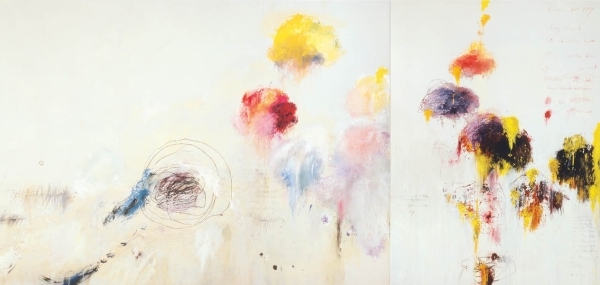Thierry Greub to Deliver Lecture on Cy Twombly’s Artwork Greub will explore physical and emotional responses to Twombly’s works in his Oct. 16 lecture in Northen Auditorium.
Thierry Greub, an art historian and lecturer based in Cologne, Germany, will deliver a lecture titled “The painting makes me want to run naked: Cy Twombly’s Aesthetics of Emotion” at Washington and Lee University on Monday, Oct. 16 at 5:30 p.m. in Leyburn Library’s Northen Auditorium. The lecture is free and open to the public and is sponsored by the Department of Art and Art History.
One of the reasons for Greub’s visit is to conduct research on Lexington native Twombly, who attended W&L during the 1949-50 academic year and kept a studio in Lexington until his death in 2011, and whose father was a coach and athletic director at W&L. Greub is interested in learning more about Twombly’s Lexington roots, and has collaborated with W&L’s Special Collections & Archives Department in this ongoing research.
The colorfully titled lecture and corresponding essay is inspired by an episode at the Menil Collection in Houston, Texas when a visitor stood before Twombly’s painting “Untitled (Say Goodbye, Catullus, to the Shores of Asia Minor)” and removed all her clothes, leaving a note in the visitor’s book that the painting “makes me want to run naked.” Although this was an isolated incident, in his talk, Greub will examine the strong physical and emotional responses Twombly’s works can evoke, specifically in connection with the poetics of Charles Olson’s “projective verse.” Elliott King, associate professor of art history at W&L, anticipates the event to be a lively and approachable lecture.
Greub received his doctorate from the Universität Basel and his postdoctoral lecture qualification, on Twombly’s inscriptions, from the Universität zu Köln. He recently published a six-volume catalog of Twombly’s inscriptions that documents 901 of Twombly’s written notations, presenting them in transcription and in the context of their 113 different literary sources.
 Detail from “Untitled (Say Goodbye, Catullus, to the Shores of Asia Minor)”
Detail from “Untitled (Say Goodbye, Catullus, to the Shores of Asia Minor)”
You must be logged in to post a comment.